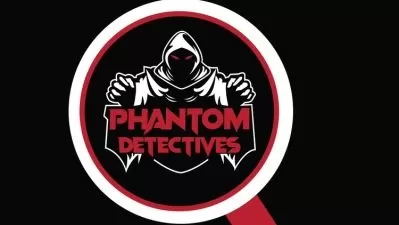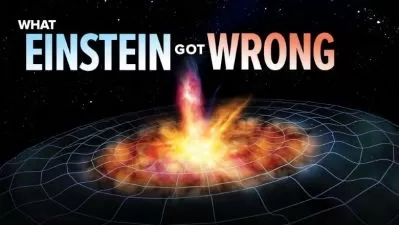Great Heroes and Discoveries of Astronomy
Emily Levesque
10:42:31
Description
Astronomy is one of humanity’s oldest sciences, and its greatest discoveries, advancements, and technological developments tell a remarkably compelling story about our universe—and ourselves.
Star catalogs, nebulae, cosmic background radiation, supernovae, and black holes. We would know nothing about any of these fascinating cosmological features were it not for the hard work and dedication of men and women from all around the world, each of whom played their own pivotal role in opening up our view of the cosmos.
When it comes to the heroes of astronomy, we tend to think of lone men persevering in the face of daunting odds. Think of the titans of astronomy and you’re likely to think of names like Edwin Hubble, Albert Einstein, and Carl Sagan. And while these individuals revolutionized our understanding of the visible and invisible universe, they, too, were standing on the shoulders of other scientists and engineers without whom none of their groundbreaking ideas would have been possible. The story of astronomy, it turns out, is much more complex than it seems.
What does it mean to be a hero of astronomy? Who are the often overlooked heroes who helped us answer some of the most fundamental questions we humans can ask? How do great discoveries and advancements in astronomy evolve over time, sometimes over even hundreds of years?
These questions are at the core of Great Heroes and Discoveries of Astronomy, an eye-opening course that takes you around the world and across time in search of the unsung heroes who, in many ways, are just as important to the story of astronomy as Hubble, Einstein, and Sagan. In 24 lessons delivered by award-winning researcher Professor Emily Levesque of the University of Washington, you’ll explore some of the great discoveries that have shaped astronomy over the past century—and who’s responsible for them. From groundbreaking new theories to serendipitous observations, from engineering the world’s largest telescopes to designing bold new ways to detect gravitational waves, you’ll witness the evolution of astronomical knowledge in small steps and incredible leaps. Above all, you’ll meet the brilliant minds responsible for this knowledge, and you’ll learn that, as much as it’s about cosmological wonders, astronomy is also about the value of enthusiasm, determination, hard work, and collaboration.
A Canopy of Genius
Professor Levesque divides Great Heroes and Discoveries of Astronomy into three main parts, each named for one of the great heroes of astronomy: Hubble, Einstein, and Sagan. Their landmark discoveries and contributions to the field offer a general canopy under which you encounter other heroes who either inspired or built off of their work.
Albert Einstein, for example, whose very name is synonymous with genius, published his general theory of relativity in 1915 and helped introduce us to mind-bending concepts related to gravity, time, and energy. But in the years that followed, it fell to Einstein’s fellow astrophysicists to seek out observational proof of his theory in the form of black holes and gravitational waves.
Then there’s Carl Sagan, the first and most famous astronomy ambassador of the modern age. A specialist in studying our solar system, Sagan inspired plenty of heroes to study our own cosmic backyard, to advocate for astronomy research, and to increase public enthusiasm for science.
And consider Edwin Hubble, the astronomer most famous for discovering our expanding universe. His groundbreaking work was only possible thanks to pioneering work by a lesser-known hero, Henrietta Swan Leavitt. Moreover, the iconic space telescope that bears his name was initially imagined by Lyman Spitzer, brought into reality by Nancy Roman, repaired in 1990 by astronauts working in low-Earth orbit, and operates today thanks to a team of scientists working out of Baltimore, Maryland.
In short, while these three titans did indeed make extraordinary contributions to astronomy, a more thorough telling of their stories reveals the great scientific feats of countless others.
Remarkable Humans, Remarkable Endeavors
Whether they stood on the shoulders of giants or themselves offered shoulders for giants to stand on, the heroes of astronomy you’ll meet in these 24 lessons are a collective of the brightest and most daring minds in science. Some of them you might have passing familiarity with; others you may be learning about for the first time. Together, they exemplify why astronomy is one of the most remarkable of human endeavors.
- Annie Jump Cannon and Stellar Classification. In 1896, Cannon joined the Harvard Computers and quickly became one of the fastest classifiers of stellar spectra on the team. Eventually, she classified around 350,000 stars throughout her career. Her key insight was to rearrange the classification system’s order and to base it on a system (devised by Williamina Fleming) of classifying stars according to their spectral line strengths. The International Astronomical Union adopted Cannon’s classification system in 1922; it’s still in use today.
- George Lemaître and the Motion of Galaxies. This Belgian priest and astronomer wrote a paper connecting the motion of new galaxies with the possibility of an expanding universe. The paper, published in 1927 in an obscure journal, was largely ignored until Edwin Hubble expanded on the work two years later. To this day, people speculate on whether Hubble was aware of Lemaître’s work, but in 1931, the physics community recognized the importance and impact of Lemaître—whose work also paved the way for the Big Bang theory.
- Karl Jansky and Radio Astronomy. When Karl Jansky first detected radio waves with his Bell Labs antenna in the early 1930s, he thought he was detecting radiation from the Sun. But actually, he was detecting a signature of our Milky Way’s magnetic field. Today, Jansky is recognized as the founder of radio astronomy. Even the physical unit used to describe brightness in radio astronomy is named after him: the jansky. Still, it took another radio enthusiast and engineer, Grote Reber, to design what we recognize today as a radio telescope and to begin the field in earnest.
- Vera Rubin and Dark Matter. In 1965, Vera Rubin joined the Carnegie Institution of Washington and began working with another astronomer, Kent Ford. While there, she identified the first observational evidence of dark matter. Physicists now believe that dark matter is a distinct and unique type of matter that doesn’t interact with light at all. Rubin’s observations with Ford showed us that the presence of dark matter in galaxies has a huge impact on how objects in those galaxies move, even if the dark matter itself remains elusive.
You’ll also meet dozens of other bright minds, including:
- George Carruthers and Riccardo Giacconi, who opened our eyes to the importance of ultraviolet and X-ray astronomy;
- Alan Guth, who proposed an innovative theory that could help explain the earliest moments of our universe;
- Gene and Carolyn Shoemaker, whose work on near-Earth objects led to the dawn of planetary geology; and
- Vikki Meadows, who leads a team specializing in habitability and biosignatures in search of extraterrestrial life.
Perspectives on Mind-Bending Concepts
Great Heroes and Discoveries of Astronomy also offers a unique perspective on understanding oftentimes overwhelming concepts in cosmology and science. By grounding topics such as the speed of light, gravitational waves, pulsars, the space-time continuum, and the life cycle of stars in the context of the people who discovered and studied them, Professor Levesque adds a profoundly human element to a field of study that sometimes turns eager learners away with its equations and laws. In fact, each of her lessons is richly illustrated with period photographs and illustrations; helpful diagrams and animation; and plenty of startling images captured by some of history’s most important astronomical tools, from Earth-based observatories to space telescopes.
The heroes of astronomy constantly push forward to pursue new discoveries, test new theories, and make groundbreaking technological advances that shape our ability to observe and interpret the cosmos. Their stories, their lives, their legacies—experienced together in this masterful course—are an incomparable window into why we’ve always found the stars so fascinating. And why we always will.
More details
User Reviews
Rating
Emily Levesque
Instructor's CoursesEmily Levesque is an Associate Professor in the Department of Astronomy at the University of Washington. She earned a bachelor’s degree in Physics from the Massachusetts Institute of Technology and a doctorate in Astronomy from the University of Hawai‘i. She was a postdoctoral Einstein Fellow and Hubble Fellow at the University of Colorado Boulder.
Professor Levesque has received a number of national and international research prizes for her work. She received both the Annie Jump Cannon Award and the Newton Lacy Pierce Prize for outstanding achievement in observational astronomical research from the American Astronomical Society. She was also awarded the Gold Medal of Honorary Patronage by the University Philosophical Society of Trinity College Dublin. She has been a Scialog Fellow, an Alfred P. Sloan Research Fellow, a Kavli Fellow, and a Cottrell Scholar. She has also received competitive research funding from NASA and the National Science Foundation.
Professor Levesque is the author of The Last Stargazers: The Enduring Story of Astronomy’s Vanishing Explorers, which offers readers a behind-the-scenes tour of the science, personal stories, and adventures of a professional astronomer. She is also the author or coauthor of two upper-level academic texts, Astrophysics of Red Supergiants and Understanding Stellar Evolution (with Henny J. G. L. M. Lamers).

The Great Courses
View courses The Great Courses- language english
- Training sessions 25
- duration 10:42:31
- English subtitles has
- Release Date 2023/08/19

















